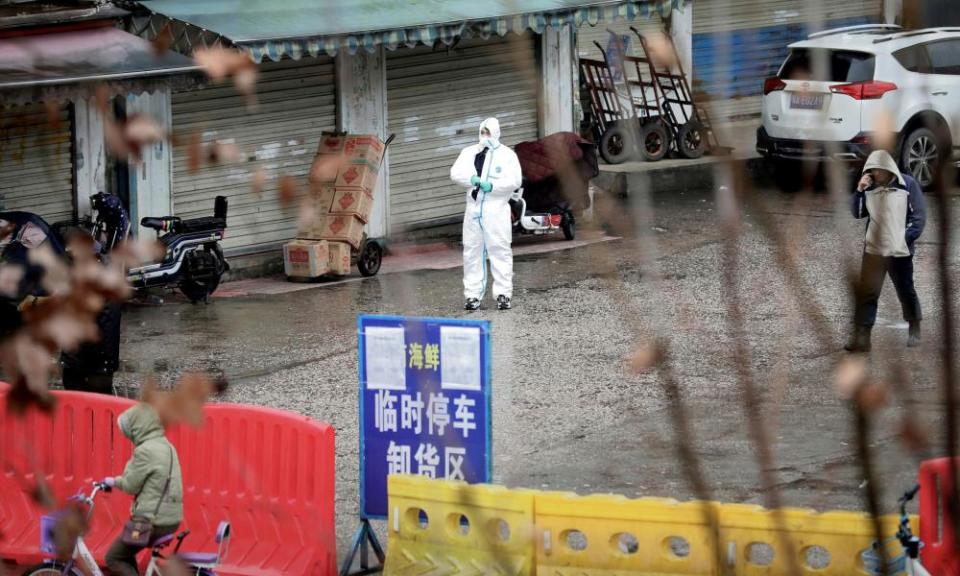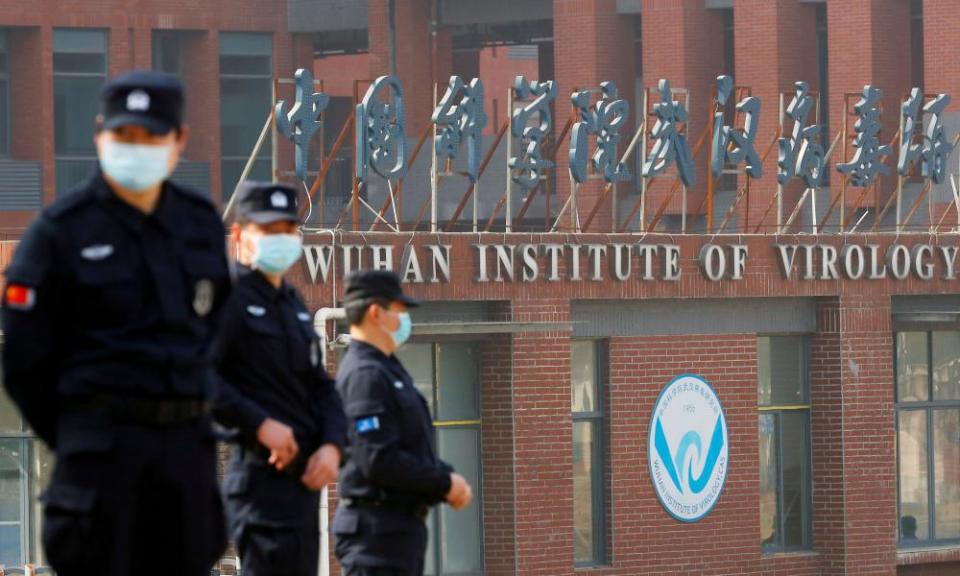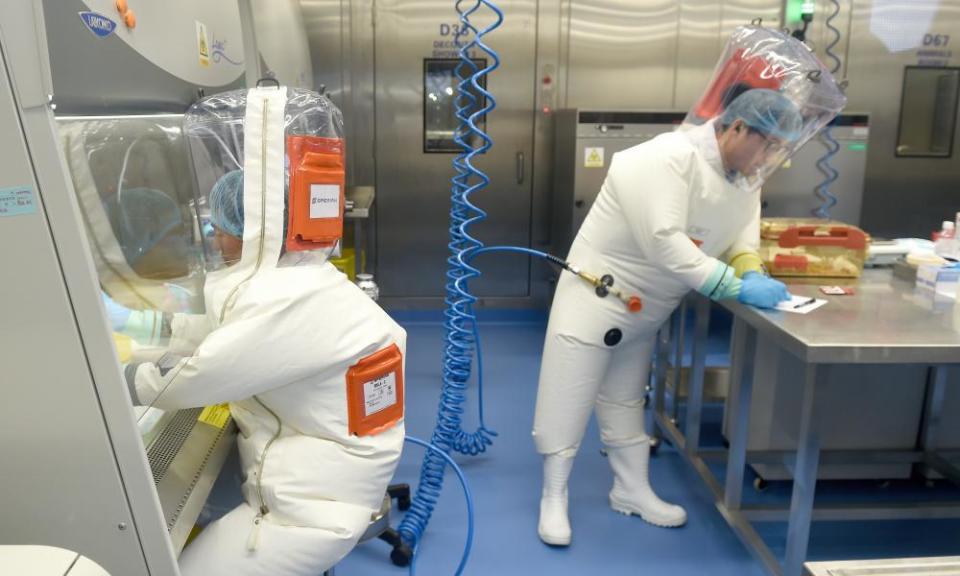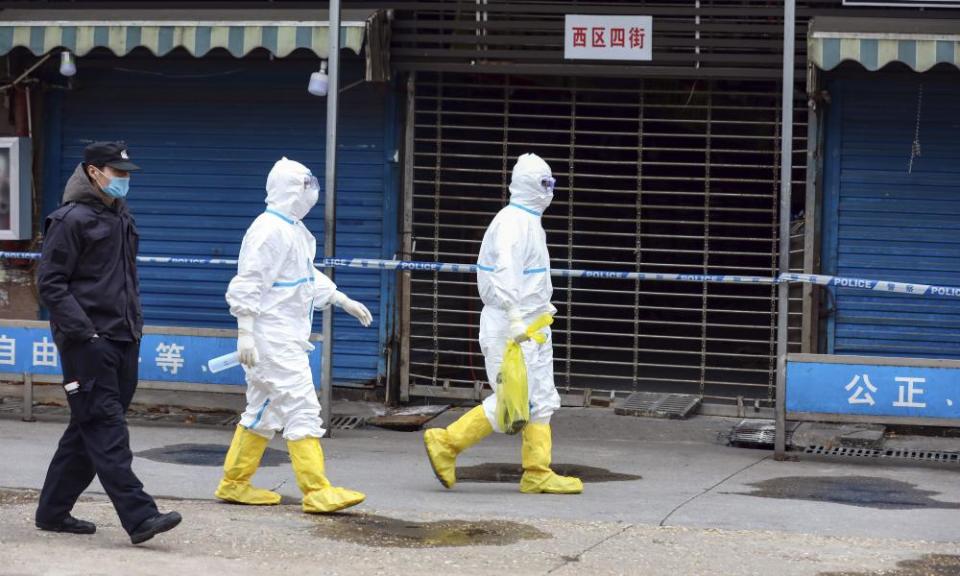In hunt for Covid’s origin, new studies point away from lab leak theory

The coronavirus pandemic has raised so many questions as it has continued its inexorable spread across the planet, but perhaps the first of them remains the most contentious: where did Sars-CoV-2 come from?
In recent weeks there has been renewed focus on whether it could have escaped from a Chinese laboratory. However, new findings strengthen the case for a natural origin, in what has become a heavily politicised debate.
The resurgence of the lab leak theory – promulgated early last year by Donald Trump and his supporters, before being dismissed – has been fuelled by the publication of emails in which Joe Biden’s chief medical adviser, Dr Anthony Fauci, discussed it, and dissatisfaction with the World Health Organization’s initial efforts to investigate the pandemic’s origins.
Most scientists favour the theory that the virus spilled over from an animal to a human in nature. “The best scientific evidence points to this,” said the Wellcome Trust’s director, Jeremy Farrar, on 4 June.
But if there is less evidence to support the lab leak theory, others say, it’s because nobody has searched for it.
The mission to China
When the WHO sent a preliminary mission to China in January, the team interviewed personnel at labs in Wuhan, the city where Covid-19 was first reported, but it did not carry out a thorough forensic investigation, because that wasn’t its remit.
“It was never an audit,” says Keith Hamilton, the head of preparedness and resilience at the Paris-based World Organisation for Animal Health, who accompanied the team. “It was a collaboration with colleagues in China to look at evidence and design studies for further investigation.”
For Filippa Lentzos, an expert in biological threats at King’s College London, the WHO mission should have gone sooner and probed deeper, sampling viral collections at the labs that were working with coronaviruses, for example, and examining the types of experiments carried out and the security procedures followed. “The real problem was China’s influence,” she says. “China influenced the mission’s mandate, independence and access.”
Since a theory can never be definitively proved – only disproved – when the WHO director general, Dr Tedros Adhanom Ghebreyesus, presented the findings of the month-long mission on 30 March, he said all theories remained on the table.
One of the signatories of a letter to the Science journal in May calling for investigation of a possible lab leak, David Relman, a Stanford University biosecurity expert, has since argued that the evidence for both theories is weak and circumstantial.
But David Robertson, who studies viral evolution at the University of Glasgow, said this set up a “false equivalence” between them, because a lot of evidence now points to a natural spillover event.
As of March 2020, scientists were confident that Sars-CoV-2 was not the product of deliberate manipulation.
They couldn’t rule out an accidental leak of a natural virus from a lab that was studying it, but thanks in part to research from the Wuhan Institute of Virology (WIV), it was also known that coronaviruses that had the capacity to infect people, and that were related both to the one that caused the original severe acute respiratory syndrome (Sars) epidemic in 2003, and to Sars-CoV-2, were circulating in Chinese bat populations.

In parts of rural China where bat guano is collected from caves and used as fertiliser, people had been found to be carrying antibodies to those viruses, indicating previous infection. In other words, a spillover event could have happened without the involvement of any lab.
Still, it remains possible that the virus escaped from a lab. Some lab leak theorists consider it suspicious that the initial outbreak of Covid-19 happened in Wuhan, home to several high-security labs that study coronaviruses.
But Robertson says the fact that Wuhan is a city is explanation enough. Unlike the rural areas where the virus might have infected people previously, Wuhan has the population density – 11 million people – to sustain an outbreak.
Of all the known bat coronaviruses, the most similar to Sars-CoV-2, sharing 96% of its genome, is RaTG13, a virus that researchers at the WIV were studying prior to the pandemic.
But since RaTG13 was identified, others have been isolated from bats in China and south-east Asia that are also highly similar to Sars-CoV-2. A cluster of them, from the Chinese province of Yunnan, was described last week in the journal Cell. “The connection between RaTG13, the Wuhan Institute of Virology and Sars-CoV-2 isn’t required any more,” says Robertson.
‘Nature is the biggest bio-terrorist’
The Fauci emails suggest that prior to the publication of the paper ruling out deliberate modification of a virus, there was a high-level discussion about how to interpret those findings. This has encouraged speculation as to whether unusual features of Sars-CoV-2 could have been the product of “gain-of-function” experiments – where a virus is made more dangerous to shed light on how outbreaks happen – at WIV or another Wuhan lab.

One such feature is the furin cleavage site, a structure in the protein that forms the spikes on the surface of Sars-CoV-2, and that enhances its ability to break into human cells. But many researchers have pointed out that it is not surprising that a virus with pandemic potential – itself a rare occurrence – has rare attributes. Coronaviruses often swap bits of their genomes in natural gain-of-function experiments, says Paul Bieniasz, a virologist at Rockefeller University in New York. “Within the last two decades, such an event gave rise to Sars.”
Marc Van Ranst, a virologist who is helping to coordinate Belgium’s pandemic response, says: “Nature is the biggest bio-terrorist there is. It has shown time and time again that it doesn’t need a lot of help in creating a virus and making it jump between species.”
The claim that Sars-CoV-2 was suspiciously well adapted to humans at the beginning of the pandemic also finds little support. It infects a wide range of species – including cats, dogs, mink, tigers and lions – and if anything has become better adapted to humans over the pandemic, in part through further alterations to the spike protein.
This leaves the lab leak theory resting principally, for now, on unverified reports of three cases of respiratory illness among the WIV’s nearly 600 staff in November 2019, a winter month in Wuhan, and the fact that the institute took a database of viral genome sequences offline two months earlier – to protect it from hackers, they told WHO investigators.
Among the WHO mission’s findings was that two-thirds of the earliest lab-confirmed cases of Covid-19 had a connection with the Huanan seafood wholesale market in Wuhan, making exposure to that market the single biggest risk factor for contracting the illness prior to January 2020.

For a while, researchers were thrown by the early cases that had no obvious connection with the market, but knowing as they do now that asymptomatic transmission of Sars-CoV-2 is common, that seems less surprising. Those people could have caught the virus from others who visited the market but who themselves developed no symptoms.
Sars reached humans from bats via civets and raccoon dogs, and a path via an intermediate host – perhaps an animal sold at the Huanan market – is also considered most likely for Sars-CoV-2, though it is possible that it jumped directly from bats. By the time the WHO investigators inspected the market in January, it had already been closed for several weeks, but a paper published last week confirmed earlier reports that wild and farmed live animals were on sale there immediately before the pandemic. This has led some to argue that interviewing market stallholders is more pressing than forensically investigating labs.
For now, the identity of a putative intermediate host remains a mystery, and a virus sufficiently close to Sars-CoV-2 to indicate what path an ancestral virus took from bats has not been found.
It may never be. The intermediate host might have harboured that virus for decades or only transiently – for a few weeks, say – and in the latter case the infected animals may have long since died. The more time passes, the harder it becomes to identify that species, because the virus has now had opportunities to spill back into other animals from humans – as happened on Danish mink farms last year.
Natural or lab-made? It may not be a binary choice
One of the problems with the dispute over Covid’s origins is that it suggests there is a binary choice between theories, when the reality is far more complex. Was the origin “natural” if the virus spilled into a farmworker from a farmed animal rather than a wild one? What if the spillover event involved a researcher doing fieldwork in a bat cave, who unwittingly brought the virus back to the city on her guano-spattered shoe?
Meanwhile, other theories may not be getting the attention they deserve. In research that has yet to be peer-reviewed, for example, Xiaowei Jiang, a viral evolutionary biologist at Xi’an Jiaotong-Liverpool University in Suzhou, China, and others point out that after African swine fever decimated pig populations in China in 2018, demand rose for more exotic meat sources, including wild animals, which could potentially have been infected with Sars-CoV-2. This might have increased the ecological pressure for Covid-19 to emerge.

The WHO has yet to announce details of the further studies it plans, but Hamilton, like many others, feels that expectations of the preliminary mission were too high. It has often taken years to establish where new diseases came from. The bat origins of Sars weren’t identified until 2017, while researchers investigating the origins of the 2009 flu pandemic – the first cases of which were reported in North America – homed in first on Asian pigs and then, in 2016, on Mexican ones.
On 28 May, Mike Ryan, the executive director of the WHO’s health emergencies programme, said the WHO – which is only as strong as its members allow it to be – had been placed in an “impossible position to deliver the answers that the world wants”, and asked that scientists be allowed to follow the evidence in a politics-free environment.
However, it’s not clear if that will be possible. Relman, for example, has long argued against gain-of-function research with potentially dangerous pathogens, since lab accidents have happened in the past and could happen again. For Robertson, that is a valid debate, but it doesn’t make a lab origin of Covid-19 any more likely than the evidence indicates.
Some, like the French biologist Virginie Courtier, feel that even discussing the lab leak theory in scientific forums has become too fraught, and have taken their concerns to more mainstream outlets, while others worry that the finger-pointing will make future collaboration with China – and, hence, finding answers – harder. Robertson wishes his peers would take a leaf out of meteorologists’ book: “You don’t blame the country where the storm began.”
For Van Ranst, who has been living under police protection since receiving death threats in connection with his pandemic response work last summer, identifying Covid’s origins is important – with a view to mitigating the risk of future spillovers – but it isn’t a priority. “Let’s focus on the pandemic at hand and stopping this virus,” he says.

 Yahoo Movies
Yahoo Movies 